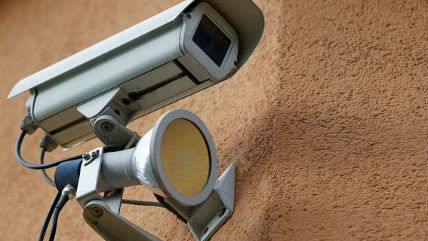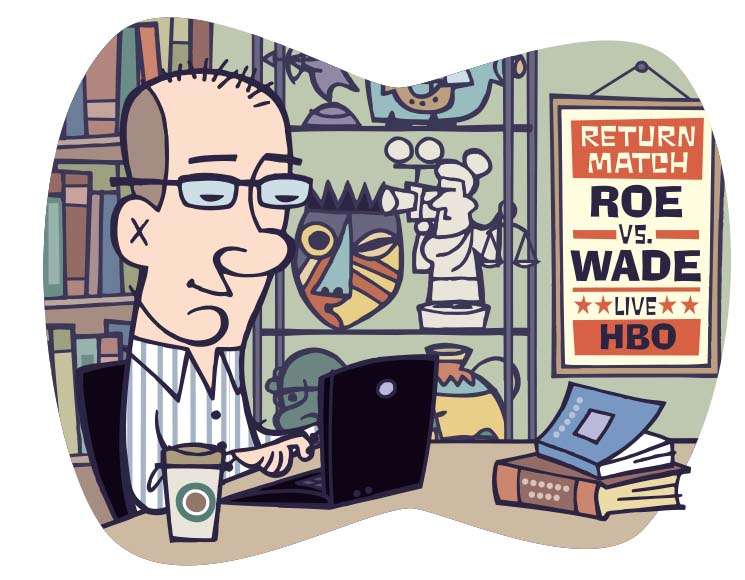Cameras in the Court
Will allowing recording devices unleash the Supremes' inner Judge Judys?

In 1935, the Supreme Court moved into its current home, a building designed to express as much majesty and unimpeachable authority as $3 million worth of marble could buy. (The overall budget for the project, in 1935 dollars, was $10 million.) According to a C-SPAN website devoted the Court, seven of the Court's nine justices immediately "refused to move into their new chambers." Frank Gilbert, grandson of former Supreme Court Justice Louis Brandeis, has said his grandfather felt the plans for the building were "too grand." Harlan Fiske Stone, another Supreme Court justice at the time, remarked in a letter to his sons that the palatial structure was "almost bombastically pretentious."
But if the structure's deliberate magnificence struck many of its intended inhabitants as more fit for a king than a judge, its size also made the Court's proceedings far more accessible to the public than it had been in its previous digs. The new courtroom may have featured Italian marble columns reportedly procured with the assistance of Benito Mussolini. But it also included space for an audience of approximately 400. By contrast, the Old Senate Chamber, where the Supreme Court sat from 1860 to 1935, could only accommodate 150.
Alas, today's justices seem far more taken with their marble palace's heavy-handed stateliness than its accessibility. In early March, in anticipation of imminent Supreme Court hearings on cases involving the Affordable Care Act and gay marriage, a group called Fix the Court bought airtime on CNN, MSNBC, Fox News, and Comedy Central to promote a long-standing dream of open-government advocates: to make the Supreme Court's "biggest decisions" at least as accessible to the American public as Seinfeld reruns, Swiffer commercials, and weather forecasts. These activists want to televise the Supreme Court.
Only two photographs of the Supreme Court in session exist, and both of those were taken in the 1930s by photographers who'd smuggled cameras into the courtroom. According to Sonja West, a law professor who wrote about these incidents for Slate in 2012, the first unauthorized shutterbug "faked a broken arm and hid a camera in his sling." The second concealed a small camera in her handbag; its lens protruded through a hole the woman had fashioned to look like "an ornament."

Both photos ended up in print, the first in Fortune, the latter in Time. At the time they were taken, there was apparently no formal law against photographs in the courtroom—but that changed in 1946, with the implementation of Federal Rule 53. Applicable to all federal courts, this states that "except as otherwise provided by a statute or these rules, the court must not permit the taking of photographs in the courtroom during judicial proceedings or the broadcasting of judicial proceedings from the courtroom."
In 1972, this prohibition was explicitly extended to television broadcasting. But eventually some courts began to experiment with TV. A 2012 CNN report notes that the Illinois Supreme Court started allowing cameras "as early as 1983" and New York's highest court "first authorized TV coverage in 1987." Even some federal courtrooms have included cameras on a trial basis. Currently, 14 federal courts are participating in a pilot program that began in 2011 and is scheduled to run through July 2015. Collectively, they've televised at least a portion of the proceedings from more than 140 cases to date, all of which are archived at the federal judiciary's Cameras in Courts website.
But in the Supreme Court, even the most obsolete Instamatic is viewed as an emphatically prohibited device capable of disrupting the institution's stately decorum. And a Sony Handycam is apparently a kind of death ray capable of disintegrating delicate judicial sternums and pelvic girdles on contact. "The day you see a camera come into our courtroom, it's going to roll over my dead body," now-retired Supreme Court Justice David Souter boasted in 1996.
In an era when the possibility of body-camming every police enforcement of local jaywalking laws is in play, the Supreme Court's refusal to allow greater public access to its proceedings is increasingly at odds with contemporary standards and expectations of government openness. Televising oral arguments would afford the general public greater insight into how the Court operates and allow it to participate more fully in the decisions that end up shaping life in the U.S.
What could we lose by curtailing this very public institution's carefully guarded right to privacy? One argument posits that regular TV exposure might, as a 2006 Congressional Research Service report put it, "result in increased threats against judges, lawyers, and other participants in the courtroom." More often, cameras' opponents worry that their presence will erode the Court's carefully cultivated atmosphere of seriousness, dispassion, and non-partisanship.
"We don't want to become entertainment," Justice Antonin Scalia exclaimed in October 2005, when Maria Bartiromo asked him about the issue on The Today Show. "There's something sick about making entertainment out of real people's legal problems." Scalia has also worried that broadcasting the proceedings in full might allow video clips to be taken out of context in ways that could ultimately misinform the public rather than inform it.
But what seems to concern justices the most are neither security issues nor the possibility of media manipulation. It's how the lure of the cameras might exacerbate their own inner Judge Judys. "I think the temptation to grandstand in front of a camera is so huge," Justice Sonia Sotomayor said at a sold-out luncheon and book signing that took place in West Palm Beach, Florida, earlier this year.
Justice Anthony Kennedy struck a similar note in 2007. "If you introduce cameras, it is human nature for me to suspect that one of my colleagues is saying something for a soundbite," he said at a House Appropriations Subcommittee hearing. "Please don't introduce that insidious dynamic into what is now a collegial court."
What such declarations fail to acknowledge is that the Supreme Court is already playing to an audience when it hears oral arguments—a live audience of approximately 400 journalists, members of the Supreme Court bar, elected officials, friends of the Court, and everyday U.S. citizens who react audibly in moments of high drama or comic relief. Indeed, at least two academic studies of Supreme Court laughter frequency have been published in the last decade. If the justices truly believe their operations can't withstand the disruptive influence of a few barely visible and remotely operated cameras, shouldn't they ban the hundreds of living and breathing distraction devices who pack the courtroom during oral arguments?
Granted, this would mean each justice would no longer get highly sought-after tickets—"about nine apiece" according to a 2012 Wall Street Journal article—to distribute to friends, family, and well-connected insiders each session. And the practice of allowing unconnected citizens to enter in groups of 30 for three-minute viewing sessions would end as well, thus robbing the Court of a tradition that lends a touch of Disneyland-like gravitas to the proceedings. The air of sober and equally applied justice that arises when spectators have paid as much as $6,000 to obtain a seat would also disappear.
The Court is by design and tradition an intensely theatrical spectacle. And in reality, its long-standing ban on cameras and TV broadcasting is its grandest piece of theater. It helps perpetuate the conceit that the Court operates with supreme impartiality, sequestered from democracy and all its partisan corruptive influences and attachments, functioning as a kind of abstract mechanism that proceeds methodically and comprehensively through cases to arrive at logical, dispassionate, and carefully considered conclusions.
To reveal the wrinkled and hairy wizards in the heart of Oz would jeopardize this grand conceit. And if this amounts to trading one form of theater for another, at least the new one would promote transparency and inclusiveness over pomp and cronyism.
This article originally appeared in print under the headline "Cameras in the Court."


Show Comments (15)